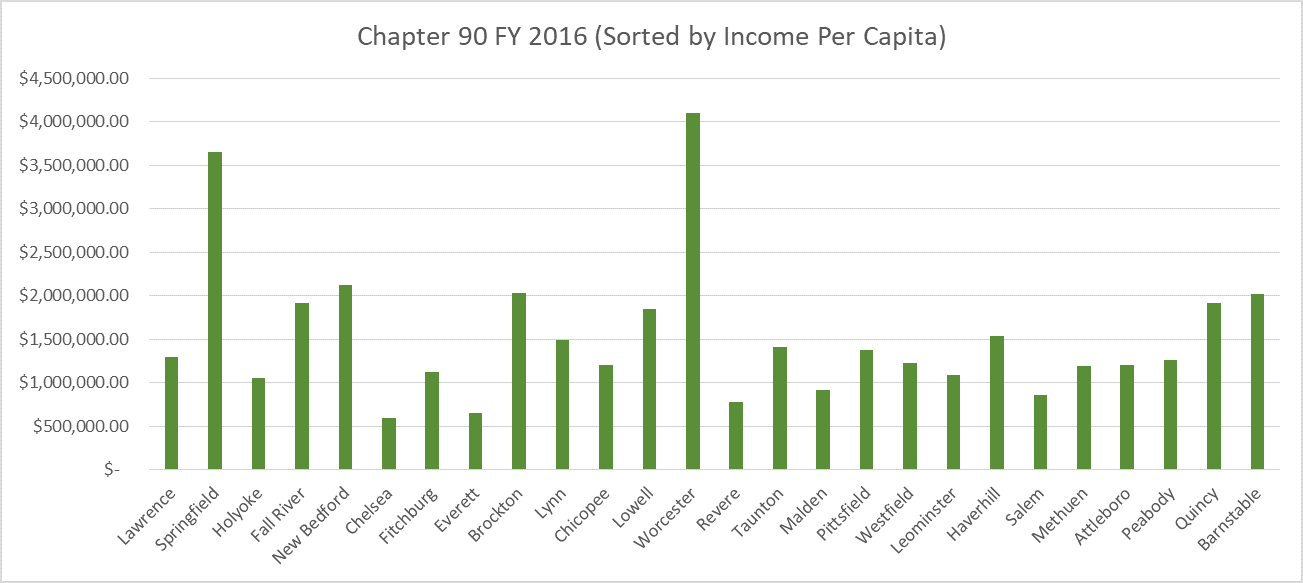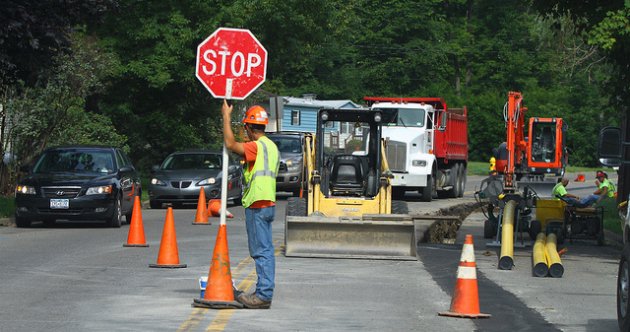How does the Commonwealth Pay for Roads?
Maintaining, safe, efficient public infrastructure challenges local, state and federal governments alike. Communities need to build new core public assets to support growing populations while maintaining those that are aging. Accomplishing those goals eats into local public works budgets.
The Commonwealth provides funding to localities which help alleviate the burden cities and towns face. Routinely, the legislature provides $200 Million dollars in Chapter 90 funding. This funding is a mainstay in local budgets and helps cities and towns pay for road resurfacing as well as new road construction.
Pioneer Institute has previously written about the differences in public works expenditures across the Gateway Cities. There, Pioneer found that Peabody spends significantly more than any other Gateway City on public works. Yet, when you look at the amount that communities receive in chapter 90 funding, the pattern is very different.

Worcester and Springfield receive the largest amount of chapter 90 funding; they receive $4.1 Million and $3.6 Million respectively. Chelsea receives the smallest amount of funding; the Commonwealth only gives them $595,000.
We can use data available from MassAnalysis.com, Pioneer’s online transparency tool to look into the ways that chapter 90 funding differs from community to community and how we might expect the funds to be distributed.
The chart below makes it clear funding is not linked to per capita income. Communities with the lowest per capita income are on the left and the highest on the right. If not income-based, then how are the funds allocated to communities?

Chapter 90 funding is allocated by the Department of Transportation based upon a formula. This formula heavily weights the lane miles in a community to determine which communities receive the most funding. According to the DOT’s website, the formula they are using was developed by the Legislative Rural Caucus of the Transportation Committee. Sorting the Gateway Cities from the fewest miles of road to the most clearly shows that road miles explain which communities receive more state aid.

Chapter 90 funding helps keep the cities and towns of Massachusetts afloat. It is also key that the Commonwealth is giving taxpayers money to the communities that need it most. Citizens in Massachusetts should be confident that their money is being spent effectively.



